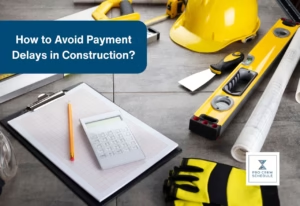In managing construction, site engineers are needed to monitor all the activities to be done on-site. However, it is unavoidable to have a skilled worker who knows more practices and methodologies than construction professionals with their years of working on different projects. If you think about it, these people are more qualified than a newly hired engineer to supervise the site activities; Meaning, an engineer’s job is not to monitor the jobsite.
Engineers are present on the construction site mainly for these reasons: to provide technical information regarding any material specification or structural detail based on what they learned at school and ensure that all operations on-site are uninterrupted by any issues. Consequently, what separates a good engineer from an ordinary engineer? It is his/her skill in the documentation.
It is acknowledged that the building plans and construction drawings are the most important documents for a construction project. However, there is more to construction documentation than focusing on these plans and drawings. Often disregarded because of its long process and multiple repetitions, the significance of maintaining good documentation throughout the project lifecycle cannot be undervalued.
Some engineers spent their whole day staying on the site without any idea of all documents that should be submitted before an activity can begin. Knowing your way through contracts and documents can prove convenient, especially when you aim to be a project manager or a contractor as your future goal. A construction team can almost guarantee constant operation with the help of every letter, submittal, and report that will be presented to the owner, whether directly or through the owner’s architect or hired consultants.
This blog will discuss some of the most common documents that every engineer should have an idea of, along with their importance.
The Most Critical Documents and Forms in a Construction Project
1. Document Transmittal Sheet (DTS)
Document Transmittal Sheets is a form that generally contains a list of documents, whether by its title or subject, which will be transmitted to any part of the construction team. Transmittal sheets ensure that a document was sent and was received by the specified party at the given date. Having these forms determines if a letter, submittal, or critical document was submitted already and if it is already pending with the receiving party, resulting in delays.
2. Work Request (WR) Form
Work Requests are forms that should be submitted before the start of any important step of every work item. This form usually contains the activity description, target start date, and end dates, along with the signatories of every engineer, subcontractor, and inspectors whose activity will be affected due to the said activity. To be approved by both the Project Managers of the General Contractor and the Construction Management, these forms ensure that all parties are aware that the specific work will be done for the specific duration that was allotted; through all the representatives’ signatures of their respective parties. This also signifies their approval and will be held responsible for all the disturbances or damages that their party will impose once the activity started.
3. Inspection Request (IR) Form
Contrary to the Work Request Form, Inspection Requests are submitted to the Construction Management by the General Contractor after an activity is done and is now ready for inspection. Taking into account all details and specifications involved for the specified activity in the request, an inspector’s remark of approval for the Inspection Request form ensures that the work is done with quality and according to the required standards. Suppose the inspector also did not find any mistakes or punch list for the specified work. In that case, the contractor can now start doing the designated precedent task according to the construction plan and schedule.
4. Material Submittal Sheet (MSS)
Like a Document Transmittal Sheet, this form is used when submitting materials selected for site use. These submittals typically contain descriptions and specifications of the material, along with the chosen supplier and the respective location that the material will be used. Some materials to be used on-site, especially for architectural works, are usually approved by the Architect or the Owner. Any discrepancies from their choice, such as color, size, or brand, could result in dismantling and replacement of the specific material, which also means rework and delay for the activity.
5. Confirmation of Verbal Instruction (CVI)
Confirmation of Verbal Instruction forms is used when the General Contractor needs affirmation for an instruction that a consultant or the architect stated during a phone call, inspection, or meetings. This can sometimes help the contractor explain to the owner any changes that will have some cost implications for the allotted budget of activity, especially if there will be a rework or a change in material that is neither due to a punch list usage of unapproved material.
6. Request for Information (RFI)
There are instances when detail on the provided construction drawings are not clear or have conflicts about other drawings. If the general contractor is unsure and cannot continue with the provided plans, Request for Information forms are submitted either to the architect or a consultant through the Construction Management team if there is any. Continuing any activity or work item with uncertainty might result in redoing all the work, which leads to delay and waste of resources.
7. Request for Approval (RFA)
It is generally known that the Architectural Plans shall govern over any details in a construction project because these are the details that the owner expects to see for the final output. However, there are times when certain restrictions or actual site conditions hinder the contractor in delivering the expected outcome. Request for Approval forms shall be used for these instances where the contractor will submit solutions and recommendations to be approved by the owner’s consultant or architect.
Request for Approval Form can also be submitted if an error is made for a specific activity due to the engineer’s lapses. If approved, any additional work that should be done so that the error will cause any problems regarding the project’s overall integrity shall be shouldered entirely by the contractor. However, if it is disapproved, the contractor will have no choice but to redo all the finished work.
8. Daily Report
A Daily Report is used to list all the activities at the site daily, especially in construction crew management. It typically contains all the activities, all equipment to be used, hourly weather status, and the respective manpower allocated for each of the activities.
9. Weekly Report
Weekly Reports are a summary or compilations of the corresponding daily reports. It has all the details that the daily report contains. However, with the weekly report, the Construction team can have more extensive information regarding the project status. A weekly report gives the team an idea of what should be prepared next to maintain continuous operation. They can also determine what activity is already delayed and should be provided with additional manpower or equipment.
10. Concrete Pouring Request (CPR)
This form should be submitted twenty-four (24) hours or a day before the concrete casting. Submitting this document late equates to the postponement of the activity due to the contractor’s short notice to the inspectors. The twenty-four hours allotment is generally used for inspection and any correction that should be done before the pouring.
11. Non-Conformance Report (NCR)
Non-Conformance Reports are issued by the engineer or inspector to the contractor if there will be any specification, drawing, or any standard that is not followed during the execution of an activity. The frequency of receiving Non-Conformance Reports associates with the contractor’s priority for their quality. These reports should be settled as soon as possible by rectifying the work and explaining the letter to be signed and approved by the engineer who issued it. The NCR can also be used to hold the payments for the contractor’s billing until the said nonconformity is settled.
The Significance of Construction Document Control
Almost all construction team nowadays hire a document control officer due to the large number of documents that should be handled and organized. However, it is the project manager and the whole construction team’s responsibility to have an idea of the importance and all details that a document contains. All engineers are expected to sign every document that is being handed to them without reading or understanding its purpose. An engineer and inspector should always consider every worker’s safety and anyone who will stay on the project after closing out before signing an important document. As issues often arise after or even during the construction, quick identification and access of all project documents are required to serve as evidence of compliance to standards and instructions.
It is said that the two most significant challenges that most construction project avoids are delays and litigation. A full and comprehensive set of construction documents can help in resolving these problems quickly. Proper organization of these documents, along with adequate monitoring, equates to easier closeout and overall project management for construction.
Want to learn more about how you can manage construction documents more efficiently? Check out our blog on Construction Document Control: 9 Tips to Streamline Your Process to provide you with ways to simplify your operations.







